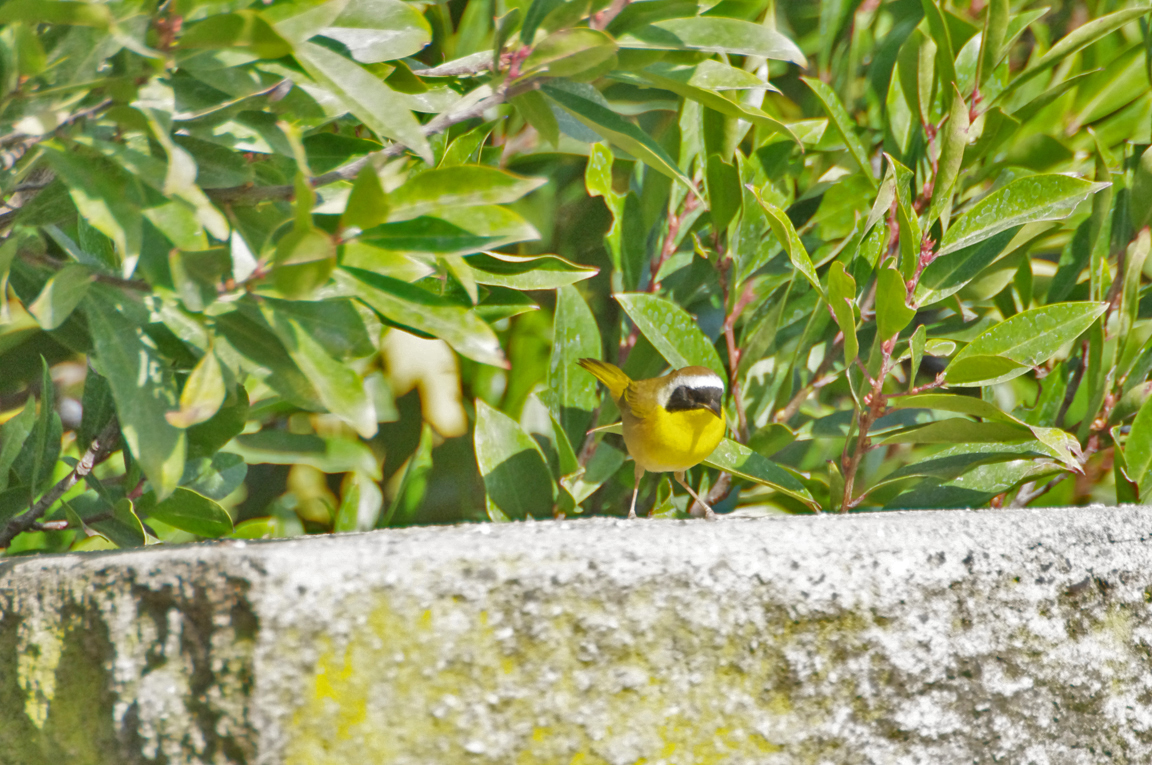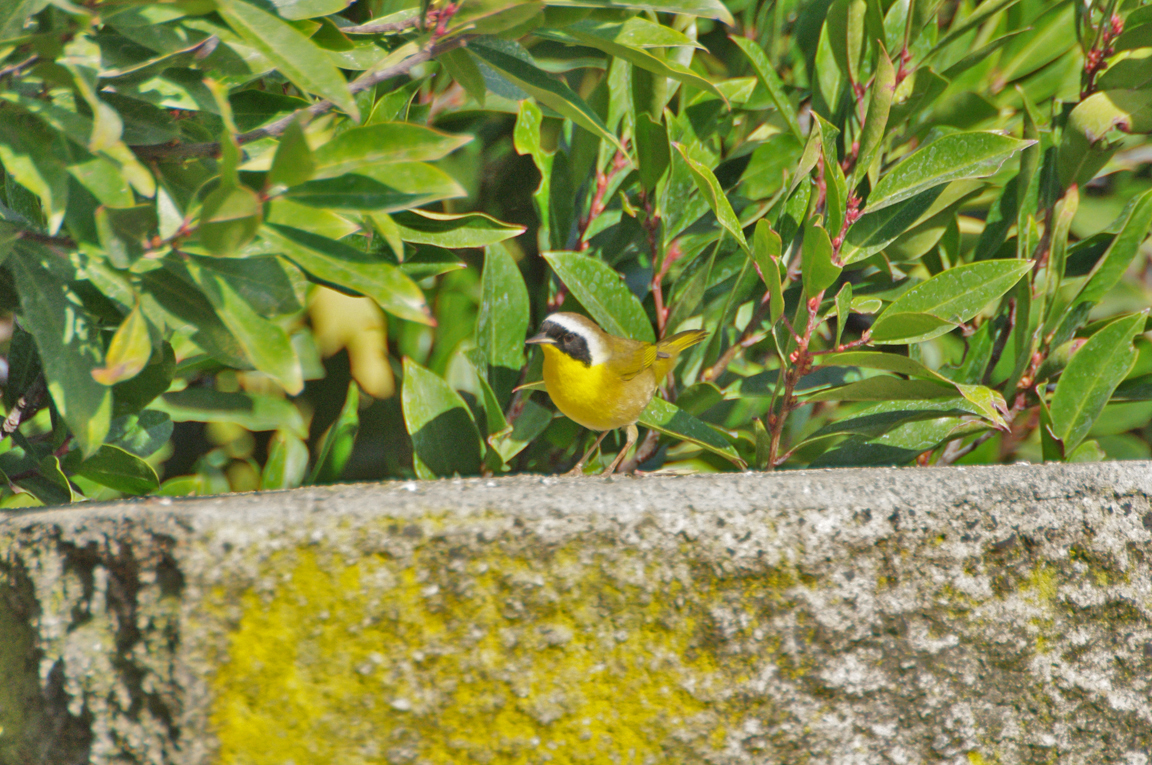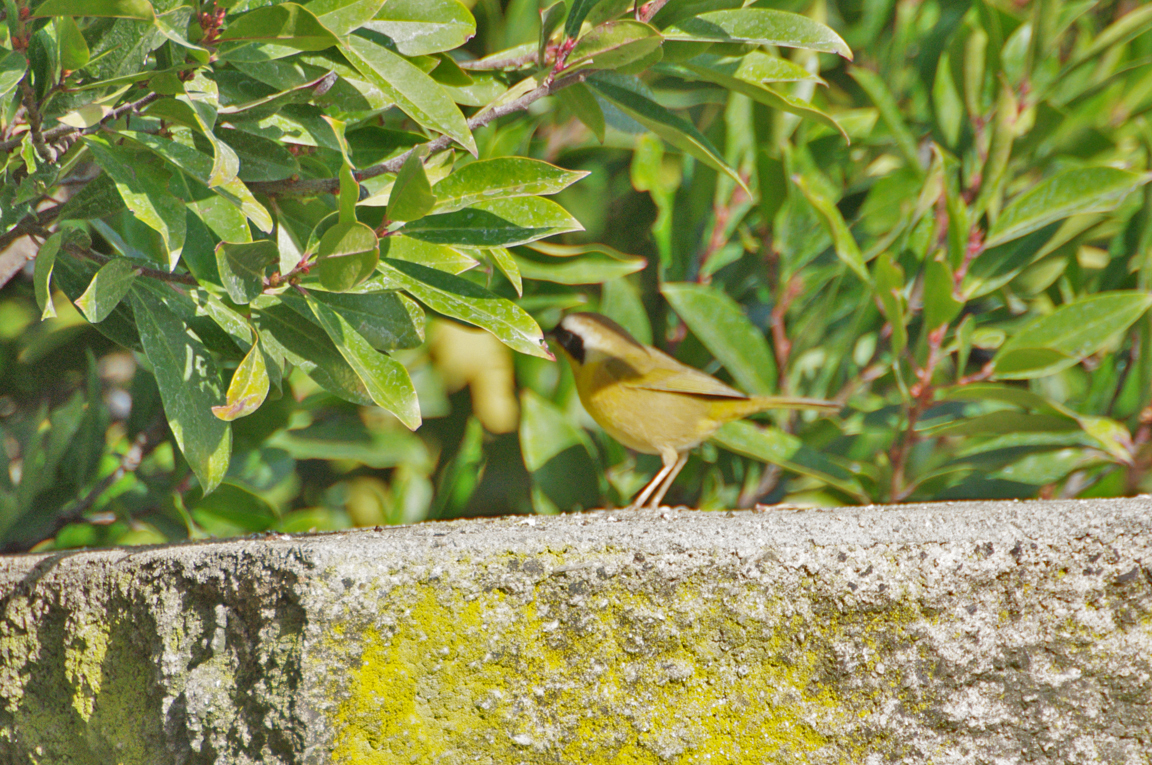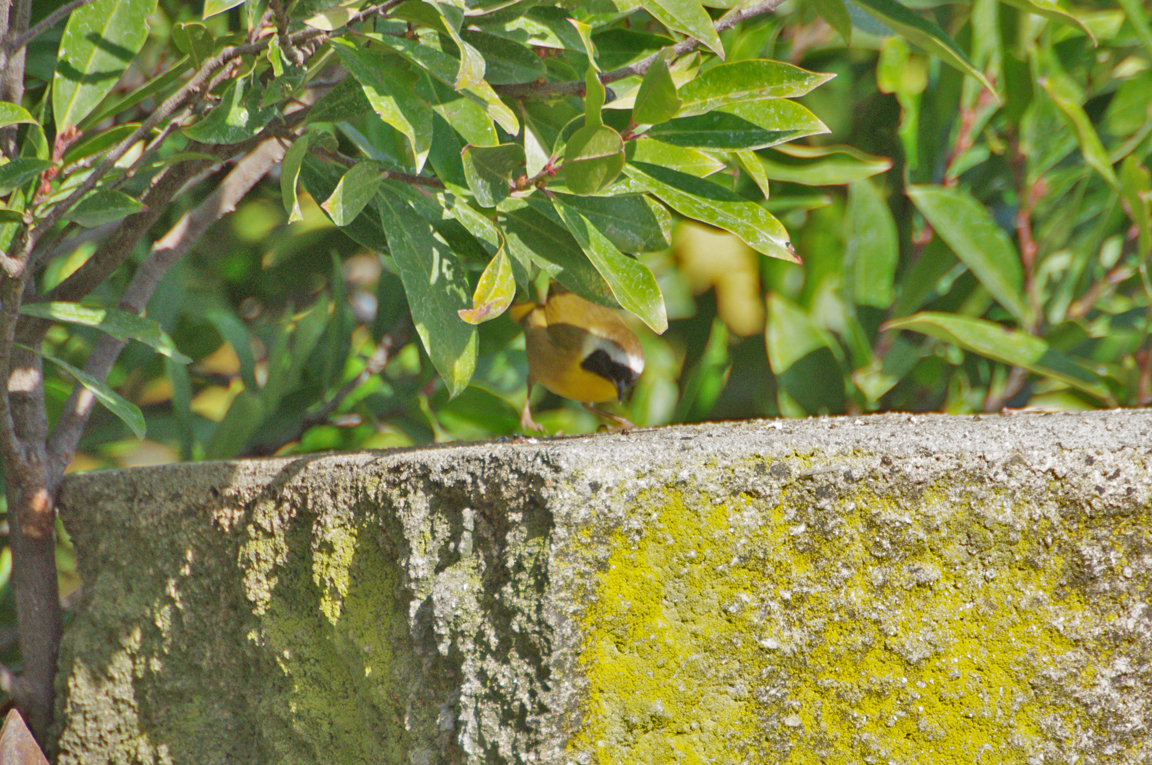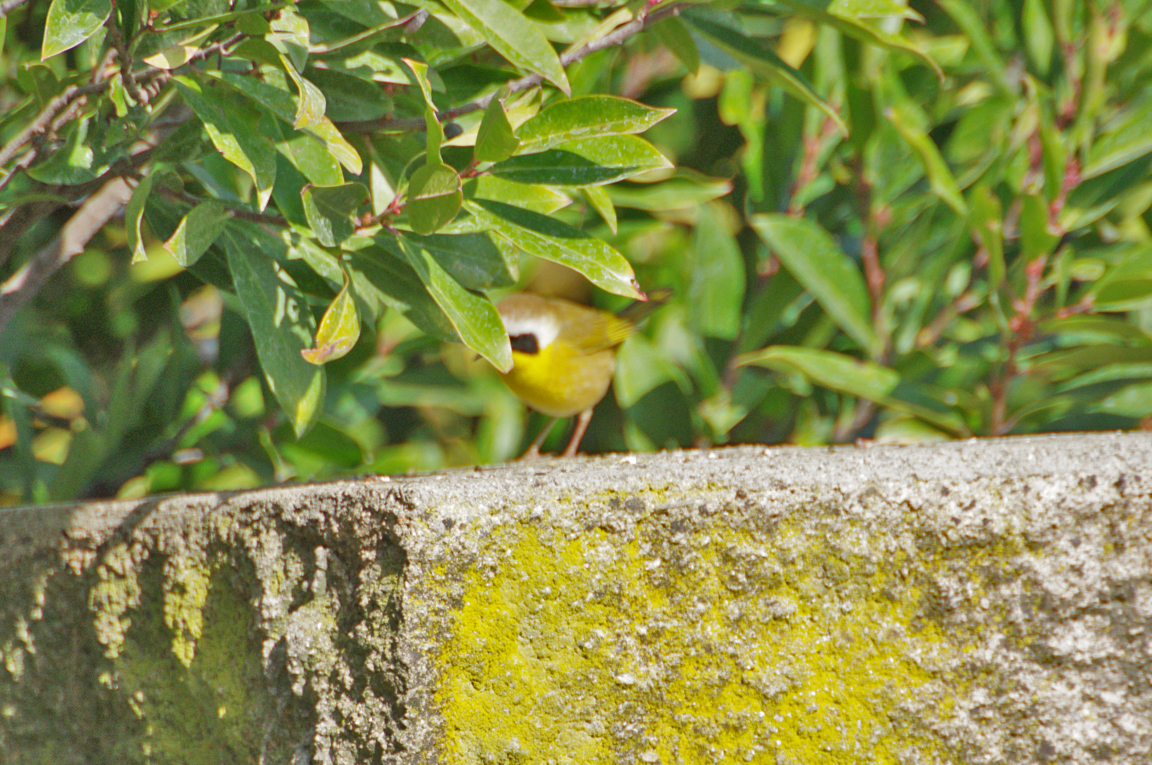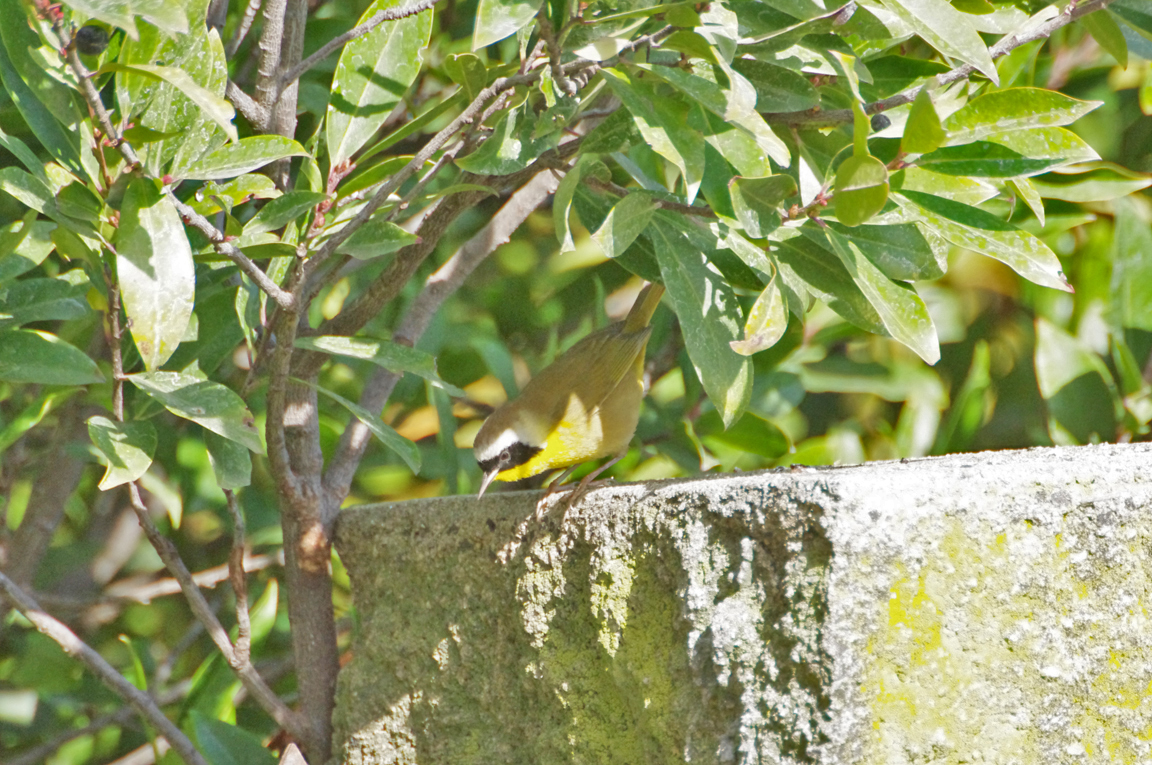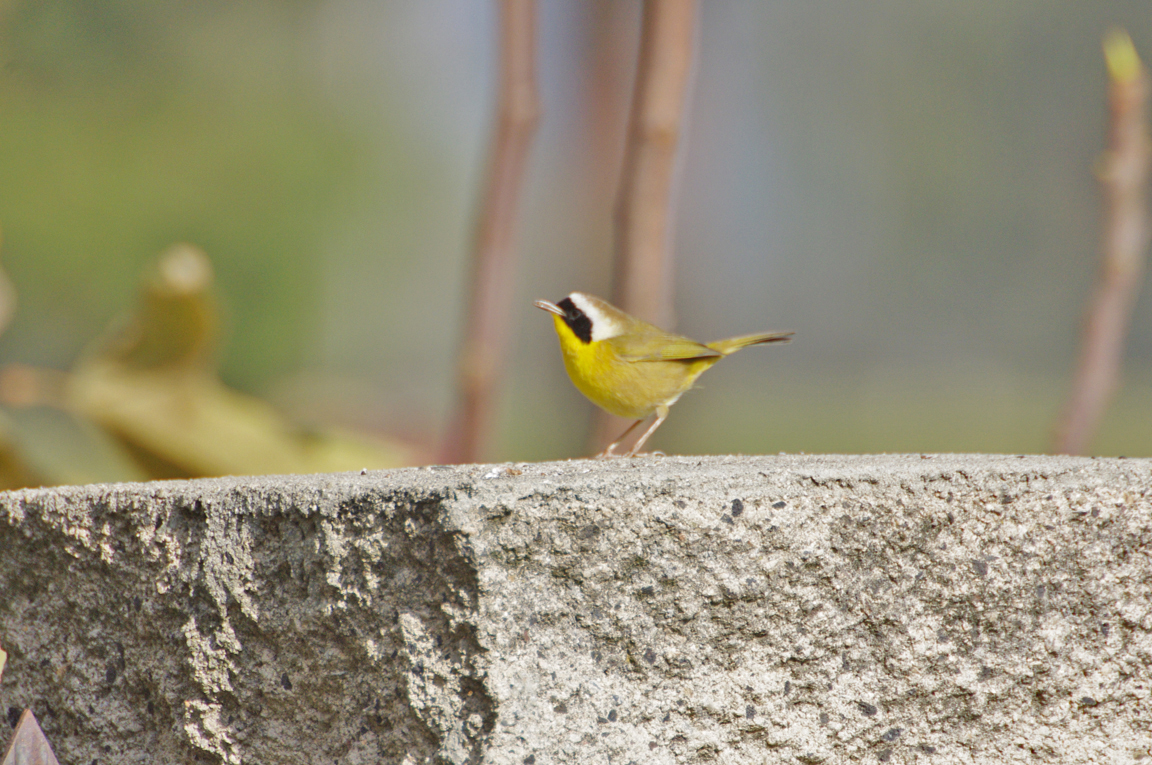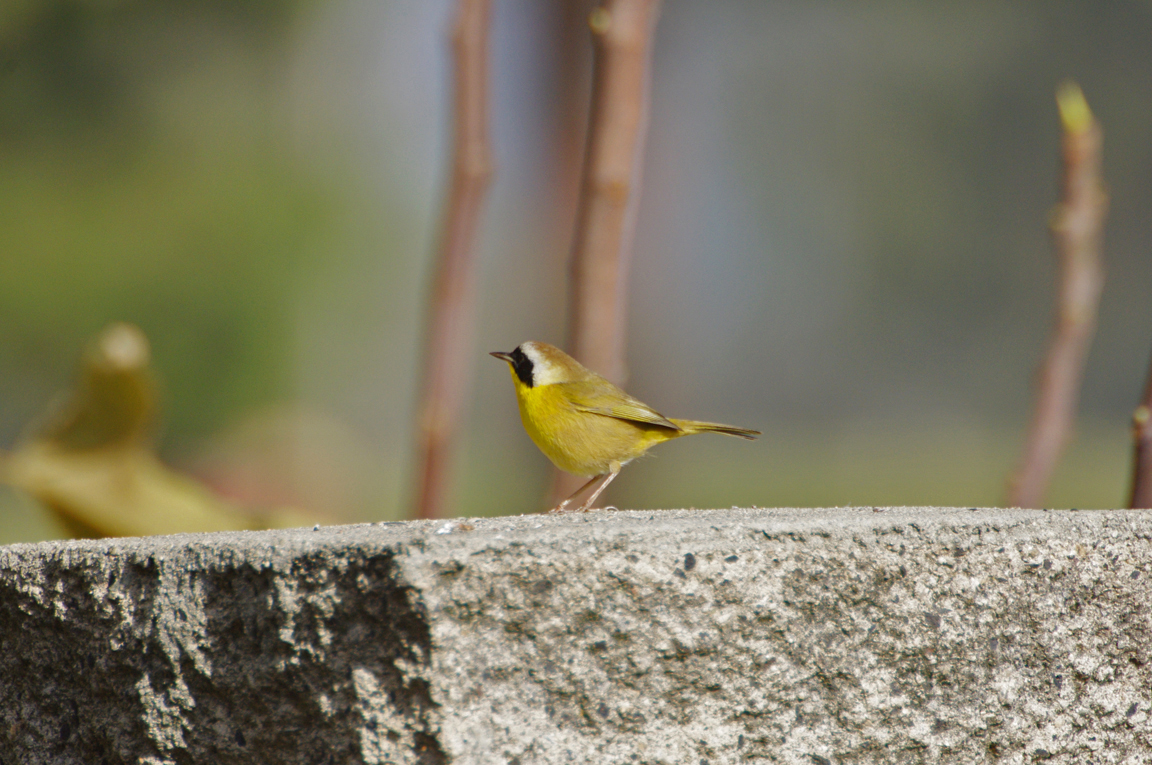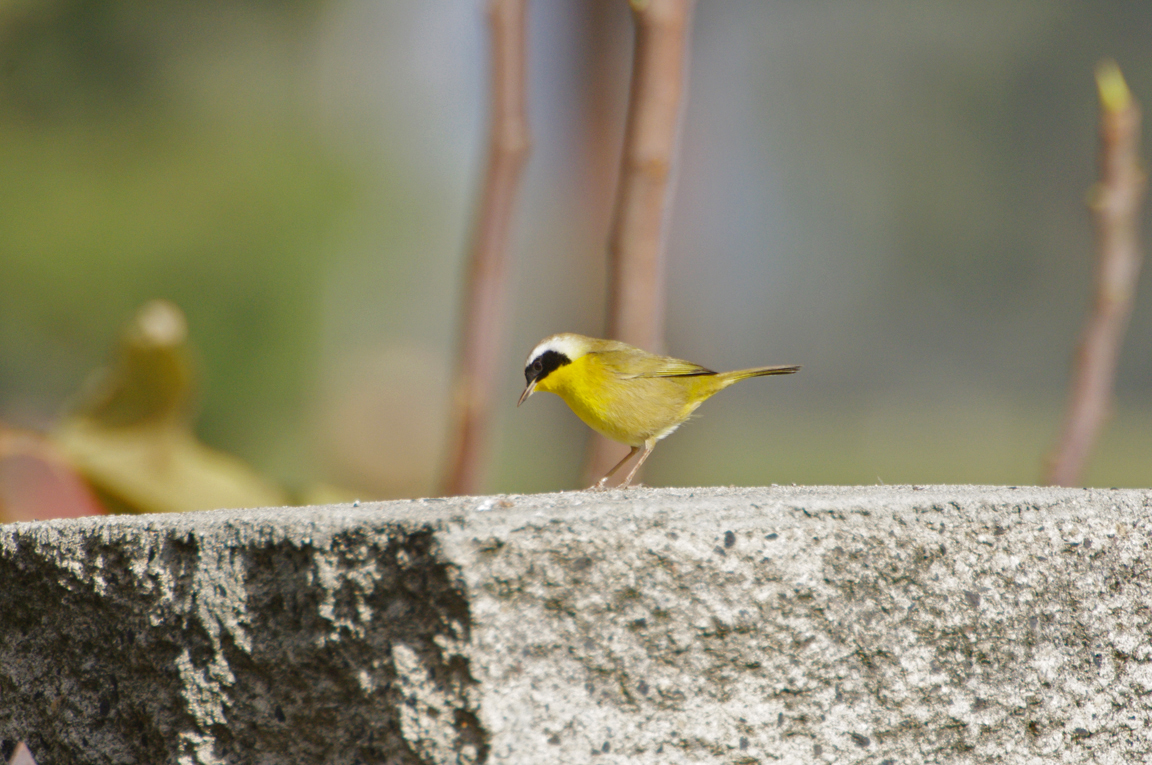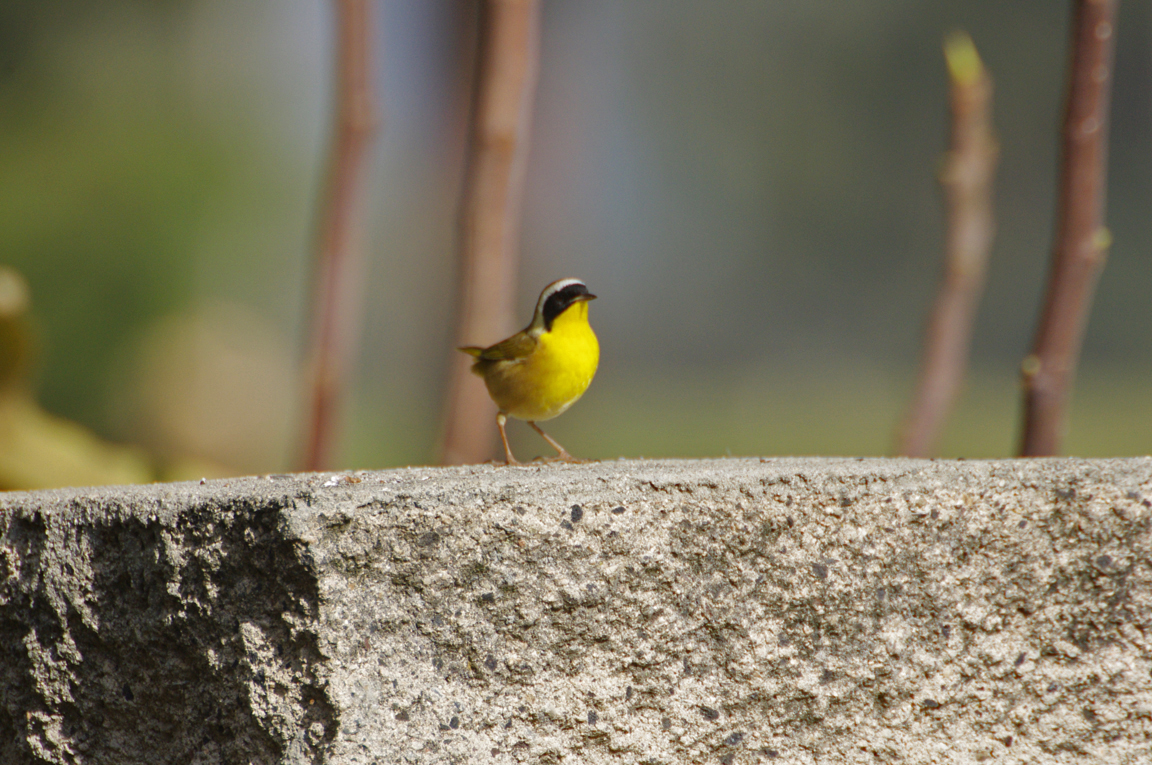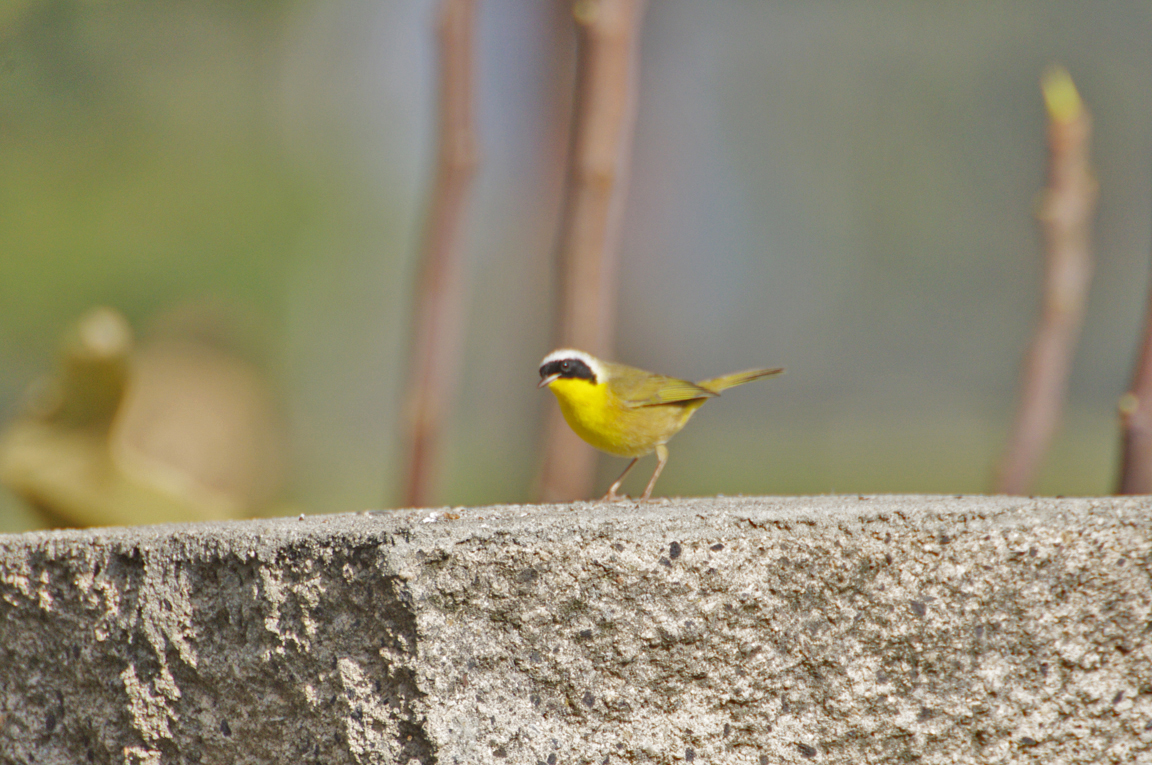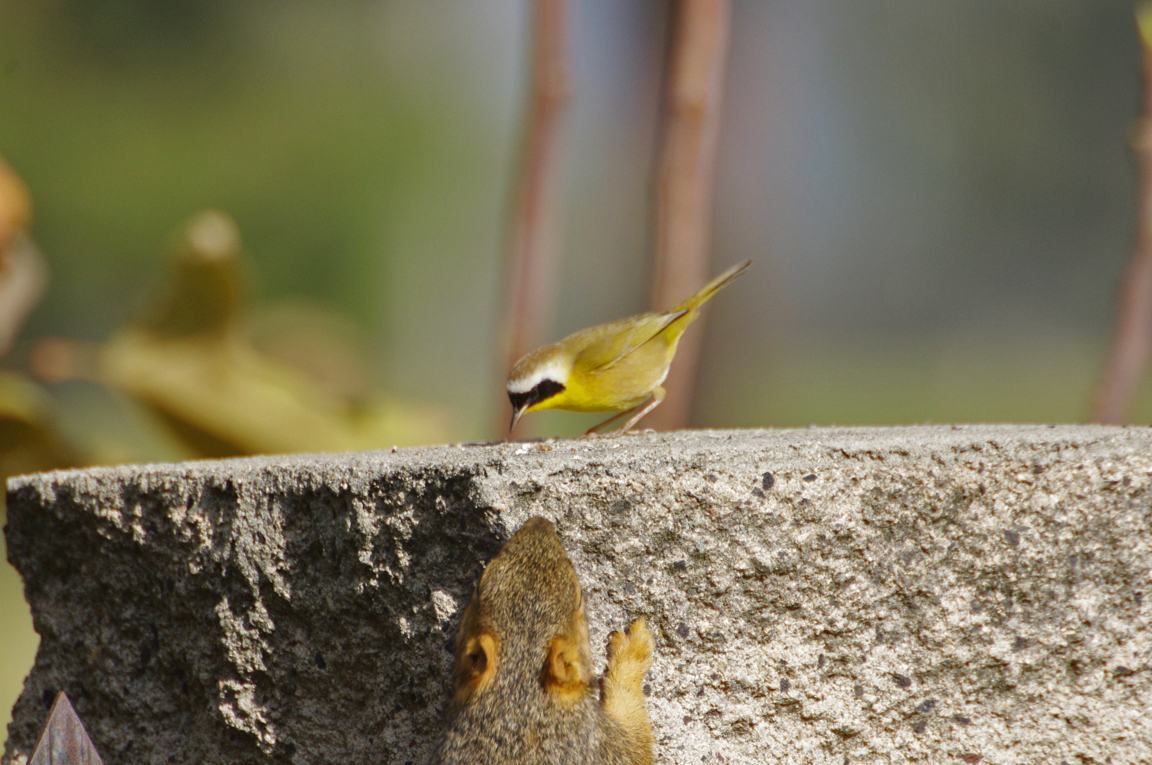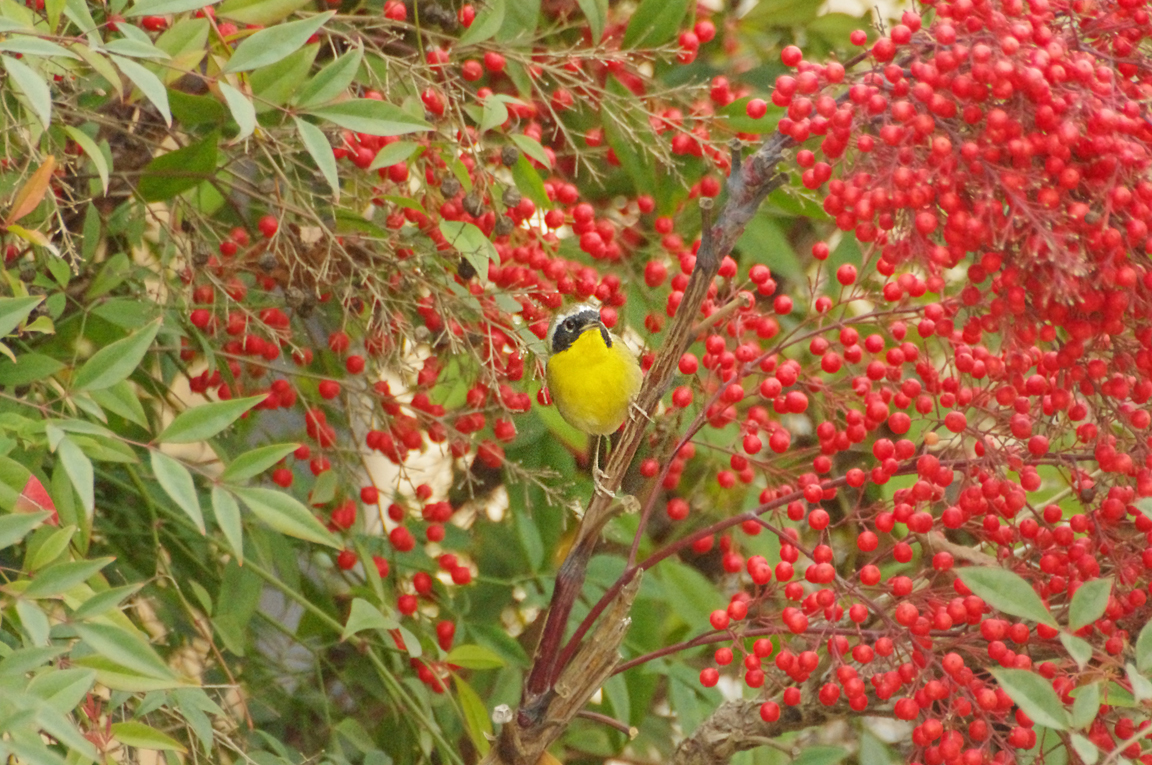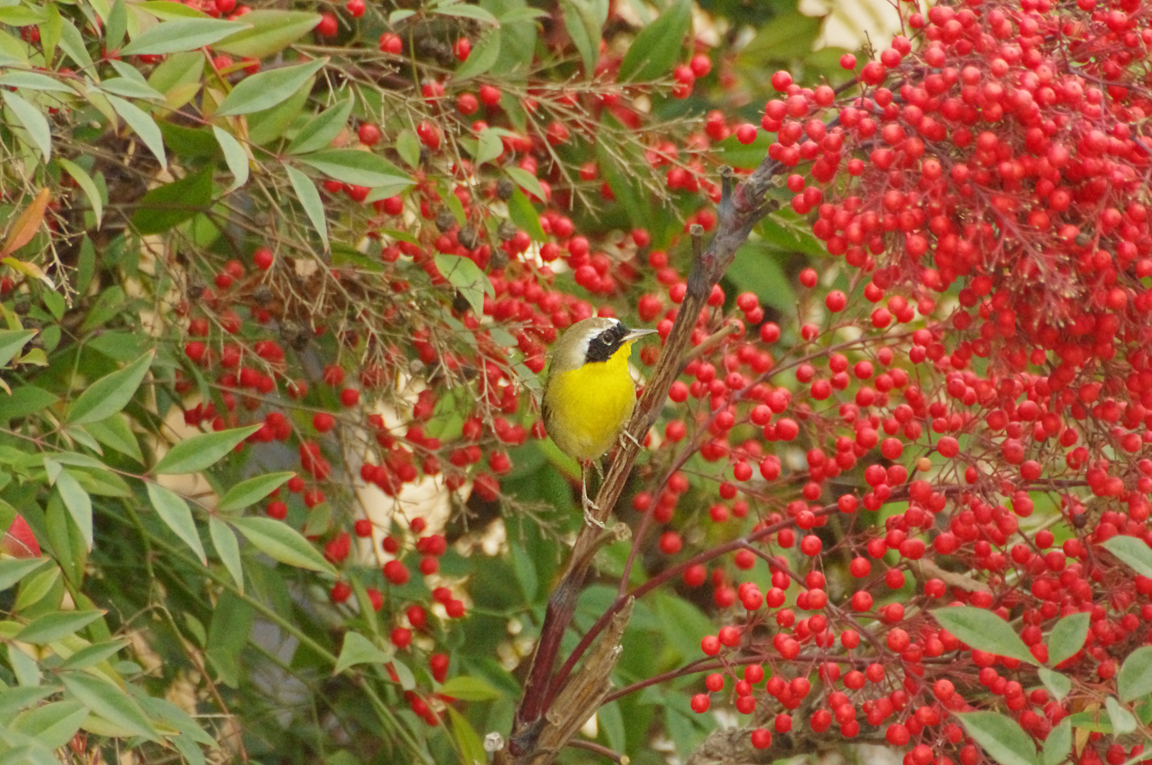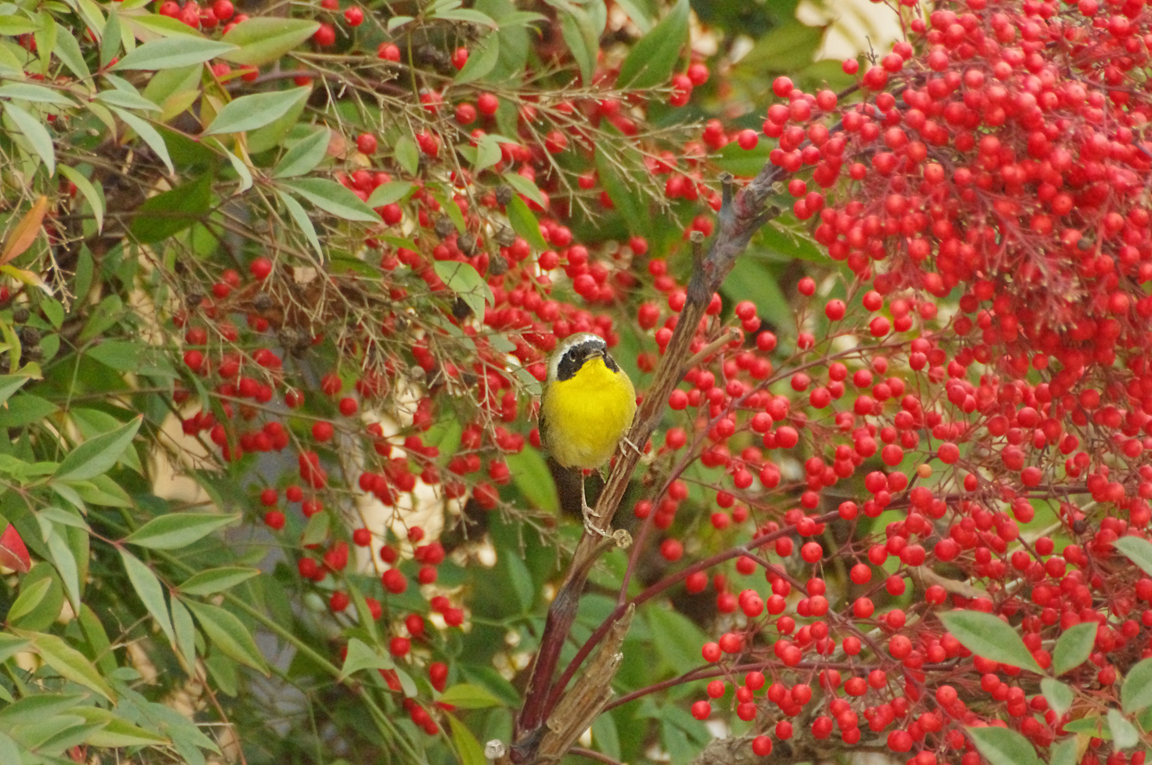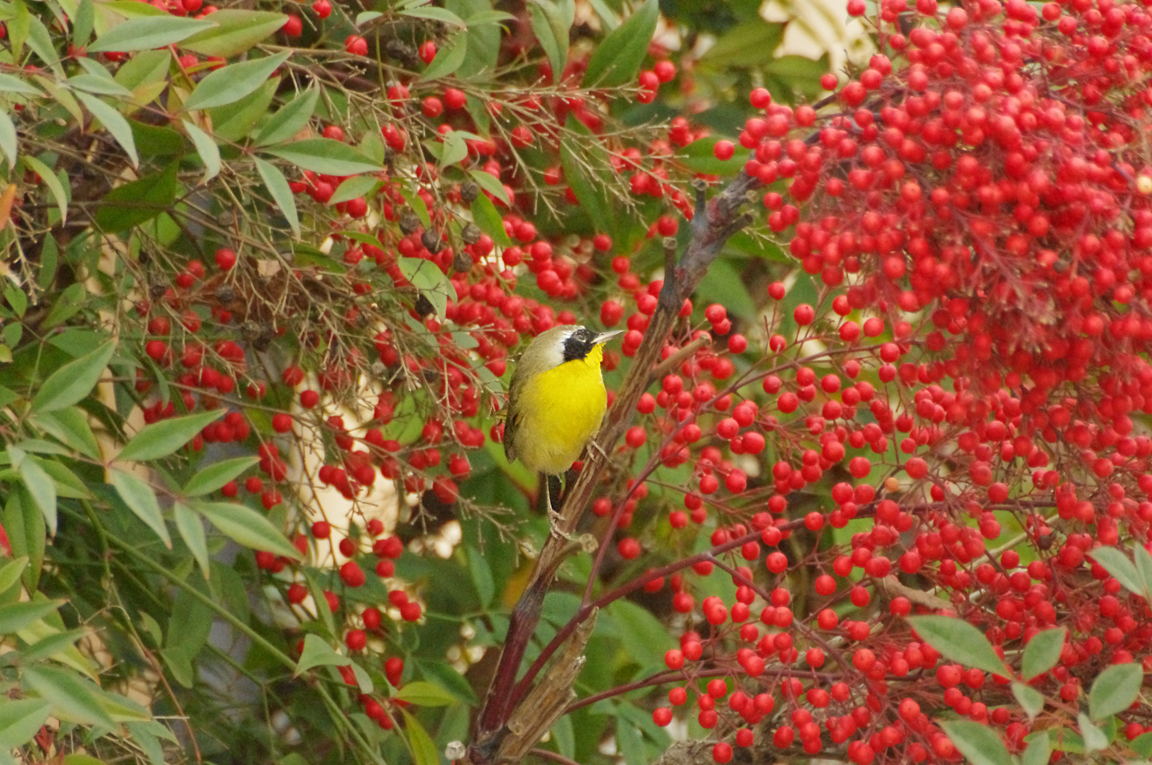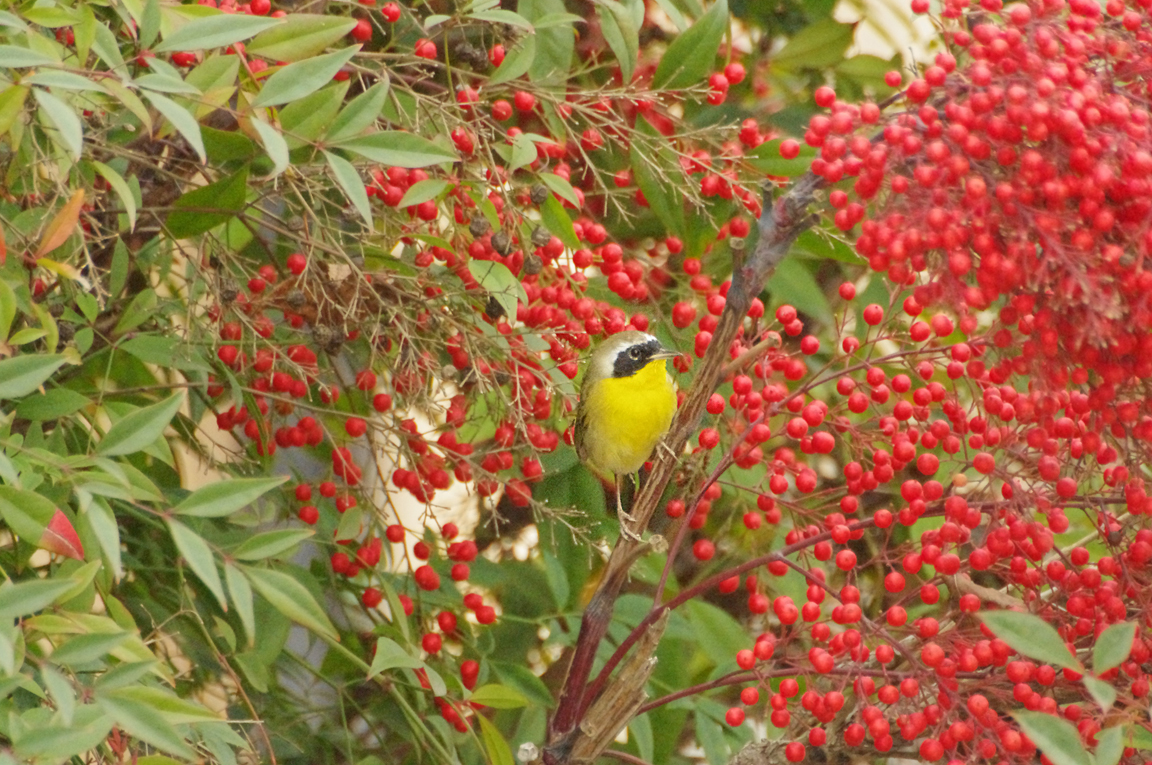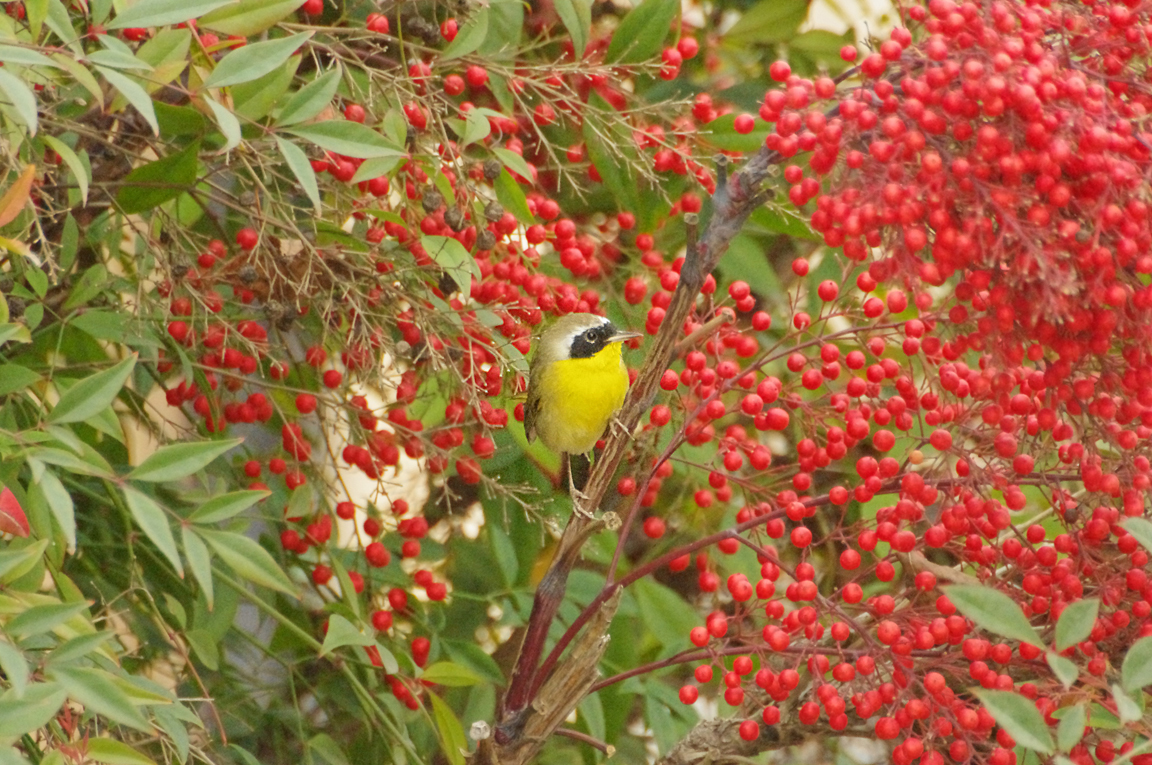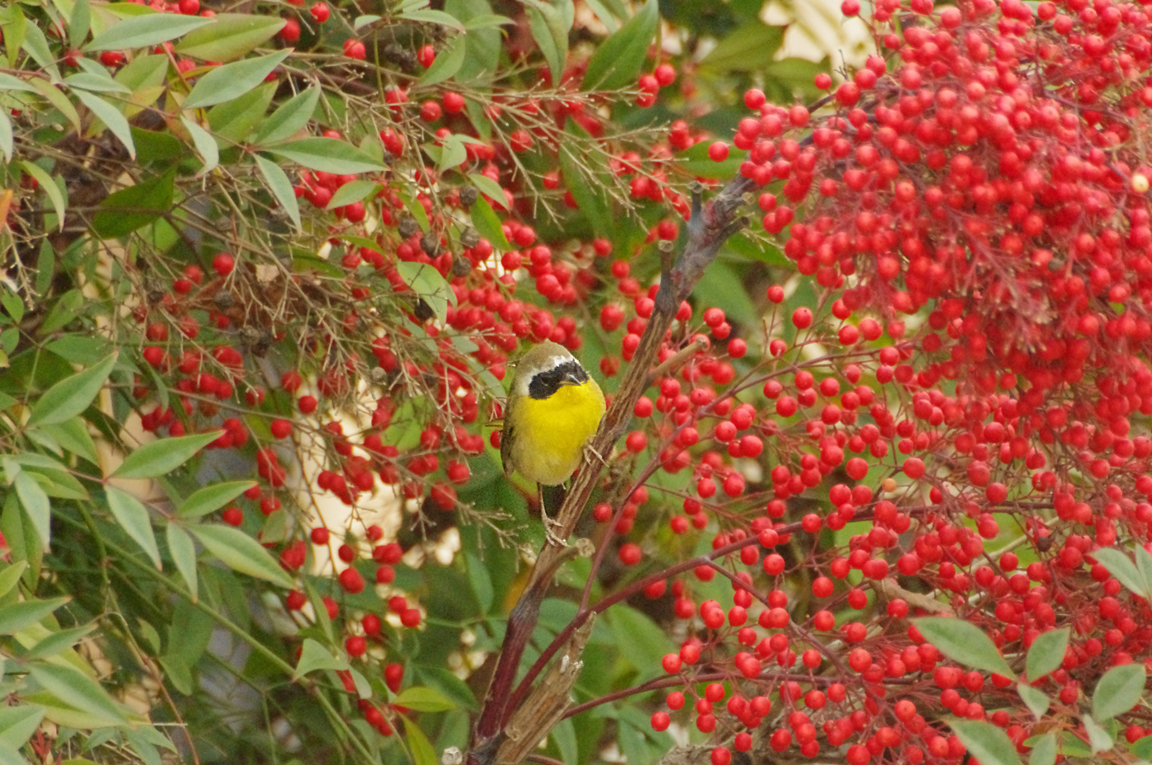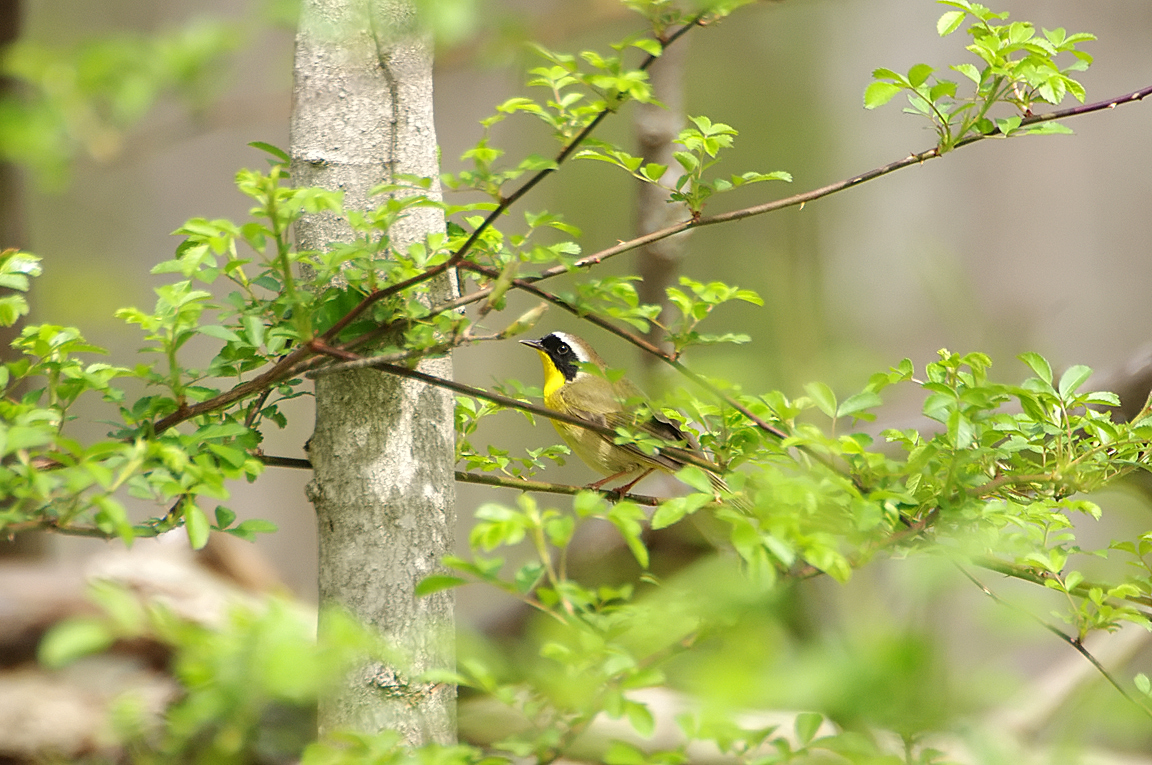|
|
|
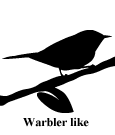 |
Common Yellowthroat
|
| Geothlypis trichas | |
A skulking masked warbler of wet thickets, the Common Yellowthroat is far more frequently heard than seen. Its "wich-i-ty, wich-i-ty, wich-i-ty" can be heard from the Yukon to Newfoundland, and from southern Florida to southern Mexico.
Interesting Information
-
Nine species of yellowthroats currently are recognized, most living in Mexico, all with black masks and yellow throats. Even more recognizable forms exist, with 12 subspecies of the Common Yellowthroat described north of Mexico. Just what the boundaries are between species and subspecies in this taxonomic complex remains to be completely worked out.
-
As a small bird, the Common Yellowthroat is vulnerable to a large number of bird-eating predators, such as Merlins and Loggerhead Shrikes. Yellowthroats occasionally are captured and eaten by unusual predators too. Observations have been made of Chuck-will's-widow eating yellowthroats on migration, and one adult Common Yellowthroat was taken from the stomach of a largemouth bass.
-
The Common Yellowthroat is apparently monogamous within a breeding season and only infrequently will males be seen with two mates in their territory. Females, however, show no fidelity to their mates and often attract other males with their calls. The true genetic mating system of this species remains to be worked out.
-
One subspecies of Common Yellowthroat is resident in the Rio Grande river delta in Texas. It holds territories throughout the winter, and not only keeps other individuals out of its territory, but it also keeps migrant yellowthroats of other races completely out of its habitat.
Description
Adult Description
-
Small songbird.
-
Plain olive green back, wings, and tail.
-
Yellow throat and upper chest.
-
Male has distinctive black mask.
-
Length Range: 13 cm (5 in)
-
Weight: 11 g (0.4 oz)
-
Size: Small (5 - 9 in)
Sex Differences
Male Description
Back, wings and tail plain olive. Chin, throat, and upper chest bright yellow. Belly whitish. Dusky flanks. Bright yellow undertail coverts. Broad black mask extending from side of neck through the auricular area and from the eye to the forehead. Whitish to grayish line above black mask separating it from the olive crown.
Female Description
Female similar to male, but face olive and underparts paler. Indistinct eyering. May occasionally have faint black mask.
Immature
Immature resembles adult female. First year male with faint black mask, becoming fully adult-like by spring.
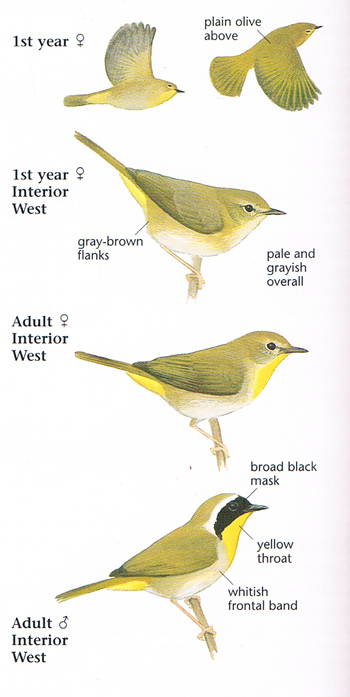
Photo taken from: The Sibley Field Guide by David Allen Sibley
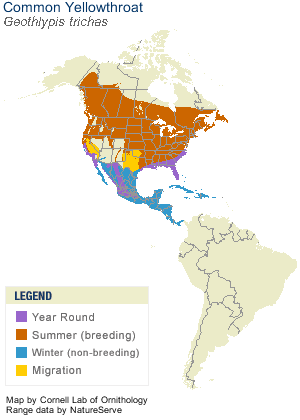
© 2003 Cornell Lab of Ornithology
|
Habitat |
|
Common in thick vegetation from wetlands to prairies to pine forests. Frequently near water. |
|
Behavior |
|
Gleans insects from foliage. |
|
Food |
|
Insects and spiders. |
Taxonomy
| Kingdom: | Animalia |
| Phylum: | Chordata |
| Subphylum: | Vertebrata |
| Class: | Aves |
| Order: | Passeriformes |
| Family: | Parulidae |
| Genus: | Geothlypis |
| Species: | Geothlypis trichas |
| Subspecies: | Geothlypis trichas arizela |
| Geothlypis trichas campicola | |
| Geothlypis trichas chapalensis | |
| Geothlypis trichas chryseola | |
| Geothlypis trichas ignota | |
| Geothlypis trichas insperata | |
| Geothlypis trichas melanops | |
| Geothlypis trichas modesta | |
| Geothlypis trichas occidentalis | |
| Geothlypis trichas riparia | |
| Geothlypis trichas scirpicola | |
| Geothlypis trichas sinuosa | |
| Geothlypis trichas trichas | |
| Geothlypis trichas typhicola | |
Similar Species |
|
|
Bird Sound |
|
Song a musical "wich-i-ty, wich-i-ty, wich-i-ty." Call note a distinctive sharp "tchat." |
|
Eggs look like this |
|
Photo taken from: ARCTOS Collaborative Collection Management Solution |
